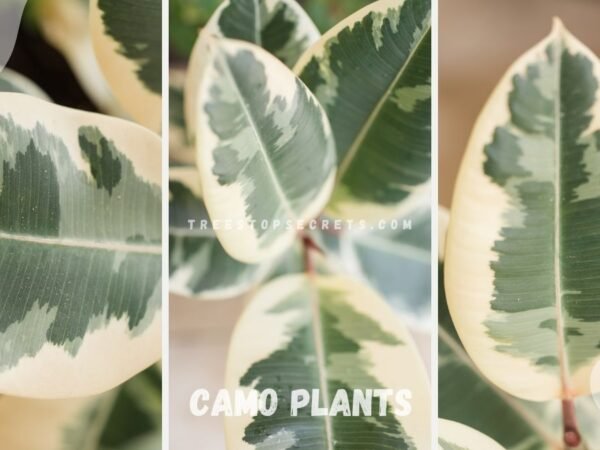Curious about poplar trees? These majestic giants have a rich history dating back centuries. From their role in ancient Egyptian mythology to their significance as a symbol of strength and endurance, poplar trees have captured human fascination for ages. With their tall stature and distinctive leaves that rustle in the wind, these trees are not just a sight to behold but also serve practical purposes like providing shade and timber. Whether you're an arbor enthusiast or gardener, exploring the world of poplar and willow trees in the native landscape is sure to leave you amazed at the secrets they hold.
Key Takeaways
- Understanding the basics of poplar trees can help you identify and appreciate these versatile species in various landscapes.
- Exploring different varieties and cultivars of poplars can guide your selection based on specific characteristics like size, leaf color, and growth rate.
- Recognizing the ecological significance of poplars sheds light on their role in habitats, conservation efforts, and environmental benefits.
- Implementing cultivation insights such as proper planting techniques and maintenance practices can enhance the health and growth of poplar trees in your garden or property.
- Considering the pros and cons of poplar trees enables you to make informed decisions regarding their suitability for your landscaping needs.
- Appreciating the diverse uses and importance of poplars in industries, furniture making, paper production, and ecological restoration highlights their economic and environmental value.
Poplar Tree Basics
Genus Overview
Poplar trees, belonging to the genus Populus, are known for their rapid growth and deciduous nature. They thrive in temperate regions worldwide, adapting well to various climates. These trees are highly valued for their quick growth rates, making them a popular choice among foresters and landscapers.
One of the distinctive features of poplar trees is their tall and straight trunks with smooth bark. Their leaves come in triangular or heart-shaped forms, adding to their aesthetic appeal. The branches of poplars are slender and flexible, swaying gracefully in the wind. This physical description makes them easily recognizable in natural landscapes.
Geography and Size
Poplar trees can be found across continents like North America, Europe, and Asia due to their adaptability to different environments and zones. Some species can impressively grow up to 100 feet tall, towering over other vegetation around them. The size of these majestic trees varies based on factors such as species type and environmental conditions present in their habitat.
Varieties and Cultivars
Major Species
Poplar trees come in various species, each with its own unique traits and distribution. The Eastern cottonwood, Black poplar, White poplar, and quaking aspen are among the major shade tree species. For instance, the Eastern cottonwood stands out with its triangular leaves featuring serrated edges. In contrast, the Black poplar is recognized by its diamond-shaped leaves.
These species can be distinguished not only by their leaf shapes but also by examining bark texture and overall appearance. White poplars have a distinctive feature of white undersides on their leaves. Populus tremuloides or quaking aspen is another significant species within this genus.
Identifying Types
To differentiate between various types of poplar trees, one needs to observe leaf shape, bark texture, and overall tree appearance closely. Lombardy poplars are popular for their columnar shape and rapid growth rate. Hybrid poplars are cultivated primarily for their fast growth rate and timber production.
The distinct characteristics of these different types make them suitable for various landscaping purposes or commercial uses like timber production or environmental benefits through carbon sequestration.
Ecology of Poplars
Plant Habitats
Poplar trees, including white poplar and eastern cottonwood, are incredibly versatile, thriving in various habitats such as wetlands, riverbanks, and upland areas. They gravitate towards moist soils but can survive moderate drought conditions. Due to their exceptional water absorption capabilities, poplars are commonly found near bodies of water.
These trees play a vital role in stabilizing riverbanks by preventing erosion with their extensive root systems. Populus genus members like the populus tremuloides exhibit remarkable adaptability to different environments due to their genetic makeup within the willow family. Their presence near water sources aids in maintaining ecological balance by regulating water levels and providing habitats for diverse wildlife.
Growth Conditions
For optimal growth, poplar trees require abundant sunlight exposure. They thrive best in well-drained soil that retains moisture without becoming waterlogged. Whether planted in sandy, loamy, or clayey soils, these members of the willow family can adapt well to varied soil types due to their resilient nature.
The ability of poplars from the populus genus to flourish across different soil compositions makes them highly sought after for reforestation projects aimed at restoring degraded lands or establishing windbreaks. Their preference for full sun exposure ensures vigorous growth rates and robust development when provided with adequate light conditions throughout the day.
Cultivation Insights
Planting Tips
When considering what poplar trees are, it's crucial to understand how to plant them correctly. To ensure optimal growth, select a spacious area for planting, allowing ample room for the tree to flourish. When planting, dig a hole that is both wider and deeper than the root ball of the tree; this fosters proper root development. Remember to water the newly planted tree frequently during its first year as this aids in establishing strong roots.
In cultivating poplar trees, understanding their growth patterns is essential. Poplars are renowned for their rapid growth rates, with certain species capable of growing multiple feet annually. Regular pruning plays a vital role in maintaining the desired shape and size of these trees over time. While poplars generally require minimal maintenance once they are established, occasional watering may be necessary during dry spells.
Growing Information
Poplar trees' fast-growing nature makes them popular choices among gardeners and landowners alike due to their ability to provide quick shade or privacy screening. Their speedy vertical growth ensures swift results when looking to enhance landscaping quickly without waiting years for substantial growth like other tree species might demand.
Moreover, regular pruning helps manage the height and spread of poplar trees while also promoting healthier foliage development by removing dead or diseased branches efficiently.
Pros and Cons
Benefits
Poplar trees offer various advantages. They are known for providing ample shade, making them ideal for cooling urban areas during hot summers. Their aesthetically pleasing appearance and rapid growth rate make them a popular choice in landscaping projects. Throughout history, poplar trees have served diverse purposes, from being a source of timber production to playing a crucial role in papermaking.
- Provide shade and cool urban environments
- Rapid growth and attractive appearance for landscaping
- Utilized historically for timber production and papermaking
Poplar trees come with some drawbacks as well. Their fast growth can lead to invasive tendencies in specific regions, posing challenges for local ecosystems. Due to their shallow root systems, these trees are prone to wind damage and uprooting during storms. Moreover, the pollen produced by poplar trees may trigger allergies in certain individuals.
Uses and Importance
Wood and Paper
Poplar trees are valuable for their wood which is lightweight yet strong, making it perfect for various uses like furniture, plywood, and musical instruments. The straight grain of poplar wood makes it easy to work with and ideal for carving intricate designs. Moreover, these trees are extensively used in the production of paper due to their rapid growth rate and high cellulose content.
Poplar trees have a significant environmental impact. They play a crucial role in ecosystem restoration by being planted to reclaim degraded lands. These trees help stabilize soil, prevent erosion, and enhance water quality by absorbing excess nutrients from the environment. Furthermore, poplars contribute to carbon sequestration by aiding in mitigating climate change through their ability to absorb carbon dioxide from the atmosphere.
Symbolism and Culture
Historical Significance
Poplar trees have a rich historical significance, valued for their versatile wood and practical applications. In ancient Egypt, poplar trees were highly prized for crafting furniture and coffins due to the durability of their wood. Native American tribes also recognized the value of poplar trees, utilizing different parts for various medicinal purposes.
The uses of poplar trees throughout history highlight their importance in diverse cultures across the globe. From ancient civilizations like Egypt to indigenous tribes in North America, these trees played a vital role in providing materials for essential items such as furniture and medicine.
Symbolic Meanings
Poplar trees carry symbolic meanings that resonate with themes of strength, resilience, and renewal. Across different cultures, these majestic trees are often associated with protection and the ability to endure adversity. The symbolism attached to poplar trees reflects their robust nature and capacity to thrive even in challenging environments.
In some belief systems, the trembling leaves of specific poplar species hold spiritual significance by symbolizing communication with higher powers or divine entities. This unique characteristic has led to associations between poplar trees and spirituality in certain cultural contexts.
Care and Maintenance
Watering and Soil
Poplar trees, known for their rapid growth, require consistent watering, especially in dry spells. When young or recently planted, they need more water. Poplars thrive in moist soil but can endure some drought once established. To ensure optimal root health, it's vital to plant them in well-drained soil to avoid waterlogging issues that could harm the roots.
To prevent stress on the tree and maintain its overall health and shape, regular pruning is essential for poplar trees. Trimming dead or diseased branches not only enhances the tree's appearance but also prevents infections from spreading throughout the tree. It's advisable to prune poplars during their dormant season when they are less active above ground.
Pruning and Health
Poplar trees require regular maintenance to keep them healthy and visually appealing. By removing dead or diseased branches promptly, you help prevent diseases from spreading further into the tree. Trimming these branches contributes to maintaining a strong structure within the tree itself.
Pruning during dormancy minimizes stress on poplar trees since they're less actively growing at this time of year compared to other seasons when energy consumption is higher. Proper pruning techniques contribute significantly to ensuring that your poplar trees remain robust and vibrant throughout their lifespan.
Buying and Planting
Selection Advice
When choosing poplar trees, think about the space you have, how fast you want it to grow, and the environment. Research different types to find one that fits your preferences. Seek guidance from local nurseries or arborists for the best tree for your area.
Poplar trees come in various species and varieties, each with unique characteristics. For instance, if you have limited space but desire quick growth, a hybrid poplar might be suitable. Consulting experts can help ensure you pick the right tree for your specific needs.
- Factors to consider when selecting a poplar tree:
- Available space
- Desired growth rate
- Specific environmental conditions
Planting Steps
To plant a poplar tree successfully, start by finding a location with ample room for its growth. Dig a hole that is both wider and deeper than the root ball of the tree to give its roots enough space to spread out comfortably.
After digging the hole, carefully place the poplar tree inside it before backfilling with soil around its base. Water thoroughly after planting to help settle the soil around its roots properly.
- Steps for planting a poplar tree:
- Find a spacious planting location.
- Dig a wide and deep hole.
- Place the tree in the hole.
- Backfill with soil. 5.. Water generously post-planting.
You've now delved into the world of poplar trees, from their basics and varieties to their ecological importance and cultivation tips. Understanding the pros and cons, along with their diverse uses and symbolism, sheds light on why these trees are cherished. Remember, caring for poplars is crucial to ensure their vitality and longevity in your landscape. As you consider purchasing and planting these trees, keep in mind the insights gained here to foster a thriving environment for them.
So, go ahead and embark on your poplar tree journey armed with knowledge and appreciation for these remarkable beings. Your efforts in nurturing them will not only enhance your surroundings but also contribute to the ecosystem's health. Happy planting!
Frequently Asked Questions
What are the key characteristics of poplar trees?
Poplar trees are known for their rapid growth, tall stature, and triangular leaves that rustle in the wind. They belong to the genus Populus and are commonly found near water bodies due to their affinity for moisture.
How can I care for a poplar tree?
Ensure your poplar tree gets enough sunlight, water it regularly especially during dry spells, and prune dead or damaged branches as needed. Keep an eye out for pests like aphids and caterpillars that may affect its health.
Are there different varieties of poplar trees available?
Yes, there is a wide range of poplar tree varieties and cultivars to choose from based on factors like size, leaf color, growth rate, and environmental adaptability. Some popular types include Lombardy Poplar, Hybrid Poplars, and Eastern Cottonwood.
What ecological benefits do poplar trees offer?
Poplars play a vital role in ecosystems by providing habitats for various wildlife species such as birds and insects. They also help stabilize soil along riverbanks with their extensive root systems while contributing to air purification through carbon sequestration.
Why should one consider planting poplar trees?
Planting poplar trees can be beneficial as they offer shade, privacy screening when planted in rows, windbreak protection on farms or gardens, aesthetic appeal with their changing foliage colors throughout the seasons while being relatively low-maintenance once established.
Image Source: Paid image from CANVA





